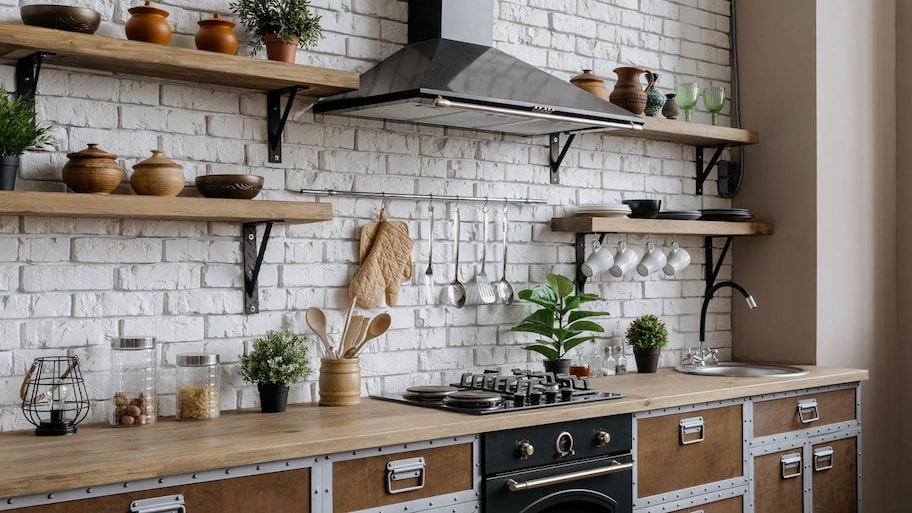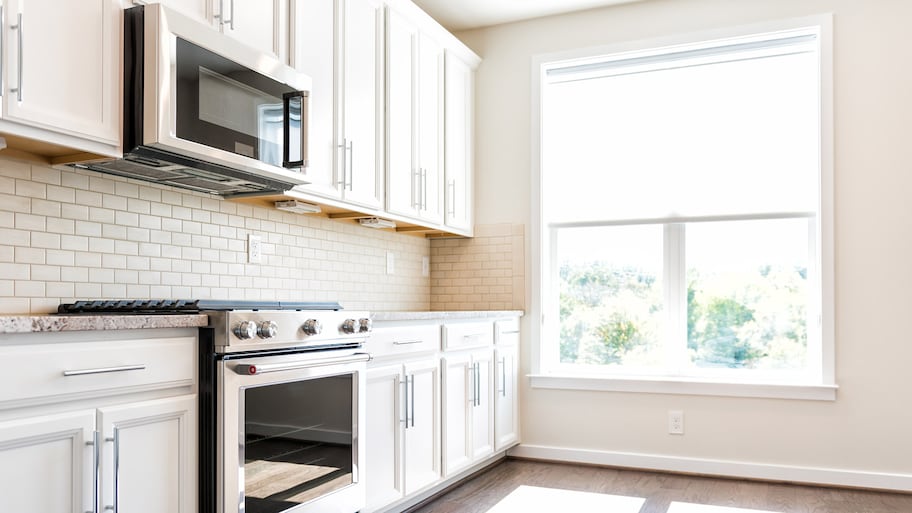How to Decide Between a Range Hood or a Microwave
You might be interested in swapping your range hood with a microwave. Before you decide, know the advantages and disadvantages of these ventilation methods


Kitchen ventilation may not be the most exciting DIY topic for homebuyers, but it’s an important one. Whether you like to saute, fry or boil dinner on the stove, a proper over-the-range ventilation system keeps the air in your home smoke- and grease-free.
The two most common kitchen ventilation systems are over-the-range (OTR) microwaves and range hoods. While these ventilation systems have similarities, they function a little differently, starting with their size, filter quality, and placement.
Often, people move into homes that already have either an OTR microwave or range hood installed. If you’re interested in swapping your range hood with a microwave (or maybe even vice versa), first learn the unique advantages and disadvantages of each.
Range Hood vs. Microwave: What’s the Difference?
These are two different kitchen appliances with two very different functions. Understanding what makes them different can help you choose which is right for you.
What is a Range Hood?
Range hoods are a type of kitchen filtration system made by popular brands like ZLINE, Broan, FOTILE, and more.
Not only can range hoods be visually stunning, but more importantly, they help reduce the amount of gas burner byproducts released into your home such as carbon monoxide and nitrogen dioxide. A high-quality, professionally installed range hood can also limit the amount of heat, steam, smoke, and odors wafting through your home while you cook.
A range hood looks like a canopy or a tent. The shape creates a “capture area” to trap smoke and splattering grease, plus a fan or blower to filter and diffuse the air. By getting rid of contaminated air right at the source, range hoods protect the air quality in your kitchen. They also make cleaning a lot easier.
What is an OTR Microwave?
Most people are familiar with microwaves, but you might not know how OTR microwaves work to filter the air.
Often, OTR microwaves have a manufacturer-installed grease or carbon filter, which leads contaminated air to an exhaust port that is ducted to the outside. Usually, this ductwork runs discreetly through an empty cabinet installed directly over the microwave, where it remains concealed.
Other times, OTR microwaves channel air through grease or carbon filters, then recirculate the air back into the home. You’ll know if you have this kind of OTR microwave if there is no ductwork hiding in a cabinet above your range.
While technically, OTR microwaves and range hoods both have filtration systems, range hoods are superior in most cases. Ahead, we explain why.
Pros & Cons: Over-the-Range Microwaves vs. Range Hoods

Before you tear out your current setup or find a local range hood installer, learn the pros and cons of each kitchen ventilation system.
Pros of OTR Microwaves
They save space
They offer 2-in-1 functionality (both a microwave and vent)
Cons of OTR Microwaves
They are smaller and capture less air
They pose a safety hazard for small children climbing and reaching above a gas range
You could spill hot liquids on yourself when removing items from inside
Generally, the fans are noisier than range hoods
They are harder to clean
Pros of Range Hoods
They create better air circulation
They have stronger filters
They are larger and can capture more smoke
They are more decorative
They’re better at reducing odors
Cons of Range Hoods
They take up space where a microwave might go
They may be too large for your kitchen
Kitchen Ventilation Cost Comparison
There’s a range of price options for both OTR microwaves and range hoods, making each possible for many budgets.
Range hoods cost can be anywhere from $400 and $1,500, with the average being $750. Island hoods installed in the center of the kitchen tend to be the priciest options, but the price tends to reflect the design, not the filtration quality. Most of the total installation cost is for the hood itself, which can range from $200 to over $1,000.
Always make sure to read in-depth product reviews before you buy a range hood. Features such as the number of fan speeds, airflow strength, thermostat control, and exhaust timers influence the price of the range hood.
Depending on the layout of your kitchen, you’ll pick from the following styles of range hoods:
Under-cabinet Hoods
Wall Chimney Hoods
Island Hoods
Downdraft Hoods
Ductless Hoods
Installing a microwave oven costs $145 on average for labor alone. Most installs cost between $105 and $1,845. Built-in microwaves cost $200 to $2,000 to install. For most projects, you’ll need an accessible electrical outlet. You can save on labor by doing the range hood installation yourself, but you may still need to hire out electrical work, which can add $500 to $1,500.
Range Hood vs. Microwave: Which Is Right for You?
When deciding between a range hood and a microwave, people tend to prefer a range hood in most cases. However, if you’re short on counter space, nuke your food more than you cook it and don’t whip up a ton of homemade dishes that send grease flying, an OTR microwave might serve your purposes just fine.
